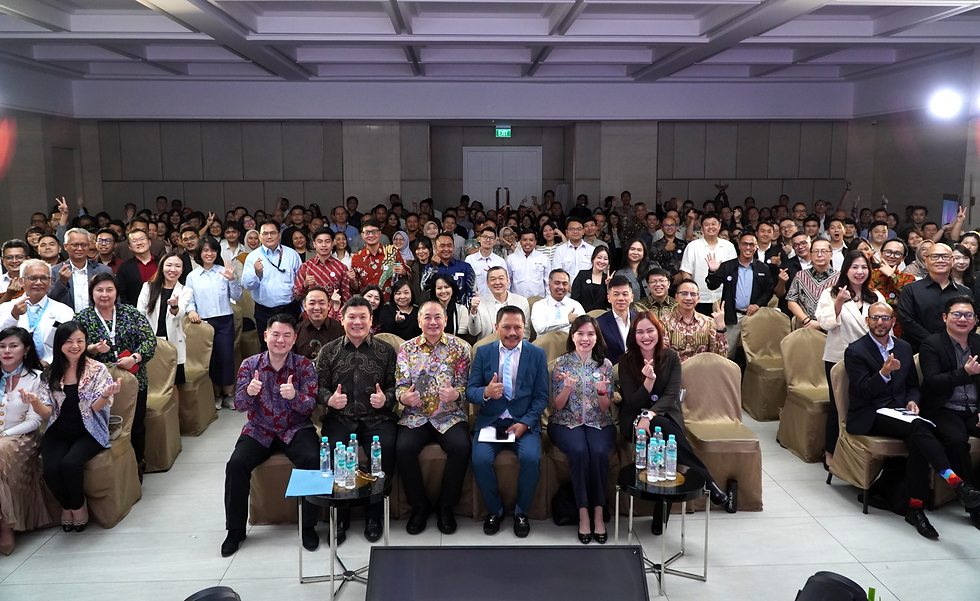8 Proven Ways to Improve Employee Engagement at Workplace
- TechConnect

- Jun 14, 2023
- 4 min read

Picture : HRD
Day-to-day operations in an organization can be overwhelming and sometimes lead to unintentional employee neglect. It’s important to remember that business outcomes and your company’s success depends on employees’ knowledge, engagement, and most importantly, happiness. High levels of employee engagement promote job satisfaction, retention, and improve organizational performance. This topic was discussed at the most recent Workhuman® Live conference in Atlanta. Based on information and data from the “Turning Insight into Action” content track, we’ve highlighted eight ways to improve employee engagement and create a high-performing, human-centered organization.
Here are 8 proven ways to improve employee engagement at workplace:
1. Lead with empathy and authenticity
Understand and be conscious of the employee journey. Put yourself in another’s shoes and think: How do they feel right now? Why are they acting this way? Who could help in this situation? Research shows those who are not feeling a sense of authenticity and belonging will leave and find it elsewhere – hence the need to focus on the whole employee journey at work. A better workplace culture is a better way for employees to be connected. Connection breeds trust, meaning, growth, happiness, and belonging, which in return builds a resilient and growth-oriented community.
2. Promote diversity, equity, and inclusion
Understanding bias and building awareness is the first step towards diversity, equity, and inclusion initiatives. Workplace diversity encourages creativity and innovation because every team member, from leadership to frontline workers, brings their own unique background, experience, and perspective to the table. When employees feel they belong at work, they perform better. DE&I is an ongoing priority. As companies continue on this journey toward equity, the challenges of moving forward can feel intimidating. There is so much to do in this area that it can feel overwhelming, but putting a progressive and feasible plan in place allows you to prioritize and reach achievable goals.
3. Create a positive, collaborative company culture
When employees are in an environment that encourages them to share ideas, thoughts, and doubts, they are more connected to both their own and the company’s goals and success. To promote this kind of environment, have fun with the way your company communicates to its employees. Another communication form is an engaging monthly campaign, with content relevant to what’s happening in the company, the world, and your employees’ lives. Consider bi-weekly video updates of new product features, with a chat forum for employees to ask questions. This line of internal communication brings employees and leadership closer to each other, builds trust and social transparency, and forms a collaborative workplace culture.
4. Make work more meaningful
Often, we get caught up in a recurring nine-to-five, causing moments that really matter to slip away. Forward-thinking companies are utilizing solutions to help shine a light on these moments by recognizing and celebrating pivotal milestones in their employee’s lives. Research shows when we recognize and celebrate somebody within their first 30 days, they are 70% less likely to leave within their first year. Other celebratory actions to consider include promotions, new roles, retirements, and even employees leaving the company to pursue their dreams elsewhere.
5. Offer employee development opportunities and coaching
Creating a culture that fosters continuous development does more than help workers build the skills they need to do their jobs. It also communicates that the organization values its employees and believes in their potential. Coaching is another key ingredient for engagement. Managers have a key role in the development process. HR leaders help maximize the effectiveness of coaching by counseling managers not to cancel one-on-one coaching sessions and, if necessary, to reschedule them as soon as possible rather than letting them slide. That reinforces the organization’s commitment to its workforce.
6. Invest in employee health and well-being
With a partially remote or hybrid workforce, it can be difficult to see or know when an employee is at risk of burnout. Utilize time during check-ins to have open conversations about workload management and even topics unrelated to work, like how things in their personal life are going. But be mindful that not everyone will – or wants to – open up. In a more private or anonymous matter, employee resource groups can provide guidance on mental health concerns, facilitate open dialogue in a safe space, reduce stigma, and sustain a culture of workplace mental well-being.
7. Get Social
Engaged workers feel emotionally invested in their jobs. A simple way to help employees care more about their workplace is to foster closer connections to colleagues. In a workplace where teams are increasingly important, healthy personal relationships are a key ingredient. And there’s virtually no end to the types of events HR can sponsor, so keep an open mind. There are many no- or low-cost options that often involve asking employees to contribute their own time or talent. As long as workers are approached in the right way, taking this tack can help people feel valued and appreciated for what they bring to the company.
8. Recognize Proudly and Loudly
It’s no secret that rewards and recognition can increase engagement. To that end, organizations need to clearly broadcast the meaning of the company’s work, LeFranc says, because that message gives people a clearer idea of how they fit into the mission of the company and what kinds of behavior will be rewarded. Too often, though, gifts and bonuses are doled out with little fanfare.
Source : SHRM, HBR





Comments